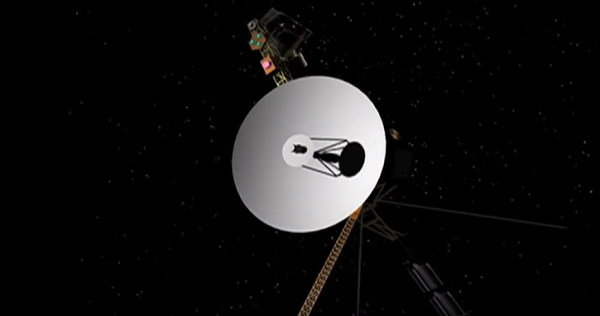
As the disco era reached orgiastic heights of groove and ski mogul terrain sculpted plumes of cocaine, rising from the glass living room tables, at least according to the rigid historical documentaries of the early adult film industry, Voyager II was launched into the heavens.
At a price tag of $895 million tax payer fiscal delight, or nearly $3.8 billion by today’s standards (For those scoring at home, the IOC kickback level amount for the Sochi Olympics from the Russian mob equates to 578,393 Bitcoins or almost a quarter of the entire cryptocurrency yield), the probe provided a needed distraction to the Carter administration, the dubious publications of the insufferable comrade Jane Fonda and her fitness publications, and a break from the LEO hovering laboratories of the forgettable Skylab missions. While Voyager I sparked the exploration and research of the Gas giants, number 2 was bigger, stronger and faster, and loaded with solid state laden sensors and an upgraded communications.
Of course, the bureaucrats of NASA offered with a snide sidelong glance and silent maniacal laughter, that the further the vehicle hurtled away from earth at speeds over 35,000 mph, the net cost of the project would proportionally diminish, and the public would benefit from the experience. The flawed logistical argument in claiming that orbiting a drone perpetually into the depths of space over solving the important problems in the nation, somehow acquired a charge per mile charge. Like a cosmic Uber or Lift, in government speak the lengths successfully traveled in the tedious crawl towards Alpha Centauri formulate a tidy narrative in the doublethink of overspending.
Employing a post-MMA fight chaotic complete bludgeoning of reason, Voyager II is nearly 11 billion miles from Earth, thus reducing the cost per mile to an eighth of a cent. At least a moral victory is certainly in order, as the drone has almost escaped the influence of the solar win in reaching interstellar space. Appropriately, NASA hosts a website and app, which allows users to track the unbelievable distances of the initial two Voyager missions.
The tech and science fiction community is celebrating the glacial crawl towards the stars, as Popular Mechanics reports with an air of dutiful propaganda, the lonely journey in the vast empty corridors of vacuum nothingness, a destination which many strive for thanks to the existence of Michael Moore, Hillary Clinton, and The View (speaking of gas giants).
In a testament to hardcore and innovative engineering, Voyager II still transmits channels of location and objective research data after 41 years within the ceaseless harshness of the entropy vortex, and in 70,000 years, there is the minute chance of reaching the nearest star system and in doing so solving some of the greatest mysteries of humanity. How were the pyramids built? Will Al Sharpton ever pay for anything? Did DB Cooper unceremoniously and aggressively sexual harass a flight attendant and ex-lover in the airways above Portland, Oregon, before plunging out of the 707 rear entrance with a parachute and hundreds of thousands of dollars, a relationship originally spawned in a seedy West Hollywood lounge. Of course, the pundits will claim that the progeny of the tawdry and lustful aware was none other than a certain Supreme Court justice.
Thanks to the proclivities of the Voyager program, everything is transparent and definable, and the very intricacies of microscopic space and unveiling the identity of God is possible, or so they say.
Similar to the rainbow infused orchestra of light and resounding baselines during the Carter term, the nation is currently in dire need of a suitable deflection from the arduous battle between dueling ideologies which threaten the very fabric and tapestry of a once proud nation enduring a cultural fracture that may never heal. Unfortunately, exaggerated accomplishments of science half dipped in fantasy and wonderment do not exist as a viable solution, but as means of burning further tax dollars.
For those wary of the potential alien fallout due to the travels of the Voyagers, the first radio broadcast in 1906 has allowed for a spherical 56 light year response from innumerable stars, and ET has yet to phone home.
Read the Popular Mechanics story here.